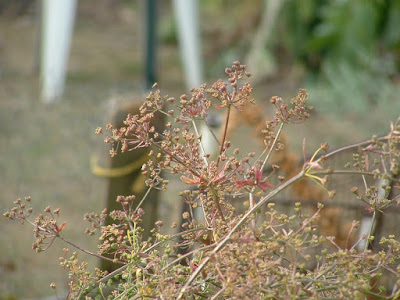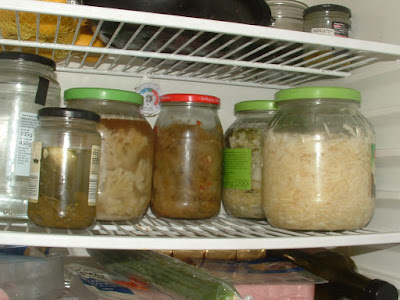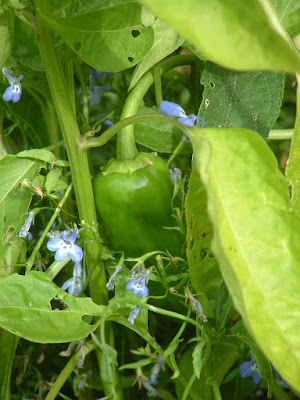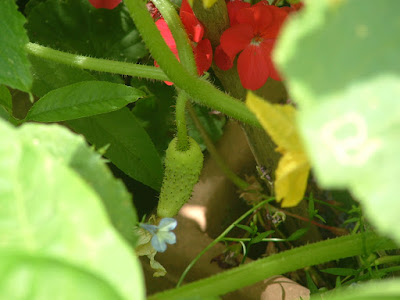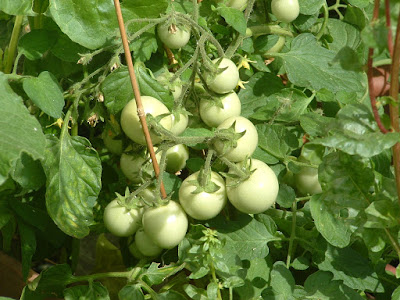 |
| Tiny achocha, July 2018 |
Roots
Celery and beets still growing near the chicken house (partially shaded plus extra manure), but not much elsewhere. Harvested a couple beets and a little celery leaf.
A rogue chicken scratched up half the onions but to be honest they weren't worth keeping anyway. Shallots too. Too dry for them and onions this year. Leeks growing little by little.
Harvesting some good finger sized and bigger carrots all through July (all in planters).
Peas and Beans
Pulled up most of the broad beans once finished, though left about half a dozen to save for seed.
Newest sown snap peas very sparse and small in the heat. Finished the earlier sowing this month (yum). Finished the yellow mange tout peas and left some to save for seed. Also finished the last of the maincrop peas.
Lots of flowers on the runner beans but only tiny beans just starting to set at the end of July--too dry? Still flowering but none harvested. French beans flowering and making beans, but only a few at a time--most of these have been salted for later use.
Brassicas
Began harvesting the mature Savoy cabbages in July. Both eating and freezing outer leaves, and inner leaves made into sauerkraut. Several more still growing. New season seedlings still in pots under insect mesh. Also took a couple cuttings but not sure if they've rooted.
Kale, Brussels sprouts, and newly planted out cauliflowers all growing well under insect mesh in the ground. None harvested yet.
Still have purple sprouting broccoli seedlings and cuttings in pots under insect mesh, to be planted out.
Harvested three more mature cauliflowers in July, with one more plant yet to form a head.
Miscellaneous
Been harvesting chard leaves to dry all through July (stems cooked or frozen for later). Picking plenty of red leaf lettuce this month too; first batch nearly finished now and second batch in full stride. Harvesting good sized spring onions this month.
Sweetcorn forming ears by the end of July (not many though); plants blown down in wind and then staked up again. Little fruits forming on regular tomatoes and peppers but none harvested yet. Picked first couple of cherry tomatoes and cucumbers. Cucumbers suddenly began wilting at the very end of July--happened last summer too, just after harvest began...
Lots of growth on squash, with lots of fruits forming; began nipping off growing tips once vines reached the fence. One pumpkin formed--about cantaloupe sized by the end of the month and just starting to go yellow. Picked a few zuccini mid way through July, but none since. Picked a couple immature achocha (cute spiny things) to taste: a bit like raw green beans; will let them mature and try cooking them.
Melon vine growing up its support, very leafy, but no fruits formed yet; volunteer squash too. Both tomatillos and Aztec broccoli just beginning to form flower heads at the end of July. None harvested.
Harvested several volunteer potato plants in July, good sized and flavor but not great texture--a bit soft/soggy like a zuccini. Ate them anyway.
Fruit
Finished the raspberries (plenty), gooseberries, blueberries, and sweet Kordia cherries this month. Birds got the whitecurrants--two dozen at most. Looks like my blackcurrant and redcurrant cuttings may have died--way too hot and dry this summer; will try again in winter.
Pruned both cherries: Kordia quite hard but only lightly for Morello.
Picked a few figs this month, which had grown last summer and overwintered--small but wonderful! Many new season figs growing, and tiny ones forming for next summer.
Two fruits still growing on nectarine, a couple on Williams pear, plenty of plums (turning purple at the end of the month) and almonds, and apples beginning to color up this month.
Some new growth (finally) on Kumoi pear, though the tree's still smaller than me.
Autumn raspberry flowered and formed a few tiny fruits by the end of July.
Perennials and herbs
Dried a bit of savory for winter use, harvested dill heads to make pickled cucumbers and zuccinis, and picked small amounts of parsley, basil and chives for use fresh. Mint regrowing and flowering.
Harvested small heads from artichokes a few times in July--none bigger than walnuts. Let the chickens free range at the end of the month and they tidied up weeds around it, the rhubarb and the asparagus, but not sure if asparagus and rhubarb are still there.

